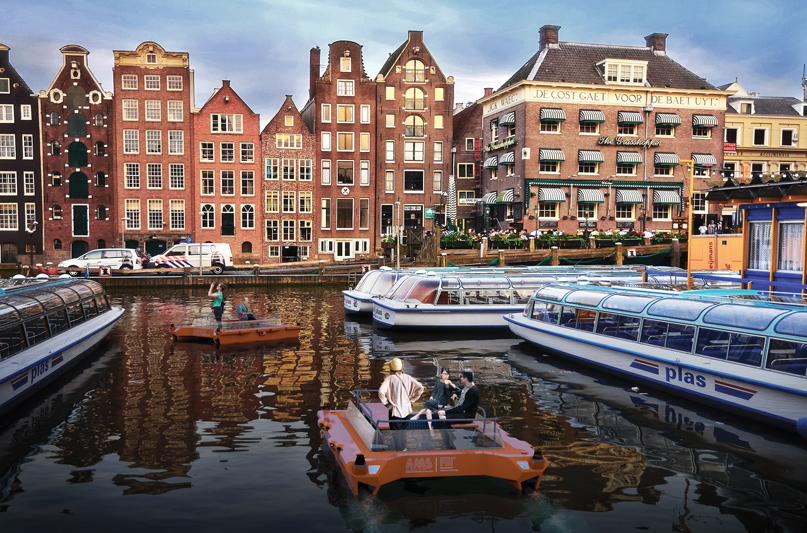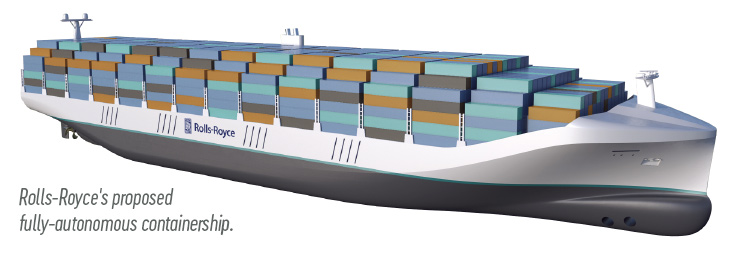 Uber began testing a fleet of self-driving Ford Fusion cars in Pittsburgh in September, one more sure sign that self-driving cars are imminent. But the autonomous technology of the near future is not unique to cars – and thanks to a collaborative effort between the Amsterdam Institute for Advanced Metropolitan Solutions (AMS) and the Massachusetts Institute of Technology (MIT), autonomous boats are headed for the canals and waterways of Amsterdam.
Uber began testing a fleet of self-driving Ford Fusion cars in Pittsburgh in September, one more sure sign that self-driving cars are imminent. But the autonomous technology of the near future is not unique to cars – and thanks to a collaborative effort between the Amsterdam Institute for Advanced Metropolitan Solutions (AMS) and the Massachusetts Institute of Technology (MIT), autonomous boats are headed for the canals and waterways of Amsterdam.
The $27M joint effort has produced a prototype, affectionately called Roboat, which is expected to make its maiden voyage in 2017.
Amsterdam’s more than 600 miles of canals make the electrically-powered Roboat a viable alternative to crowded roads and bike paths for everyday transportation, package delivery, and a host of other tasks. Among other things, the prototype will be fitted with a sophisticated array of sensors to monitor air and water pollution and provide that data back to the city.
The Roboat in concept is small – no more than about 14 feet long – and designed to be modular. In addition to moving people and things around, it is designed to raft up with other Roboat units to create temporary bridges and public spaces on the water. The program will test various sizes and configurations of the craft. Roboat’s maiden voyage will kick off a five-year test program.
“Just like with self-driving cars we want to accumulate many miles to make sure the system is safe, and to test it for an extensive period of time,” Professor Carlo Ratti, Director of the MIT Senseable City Lab, told CNN earlier this year.
 The AMS-MIT project is not the only autonomous vessel program in the works. In 2014, the Rolls-Royce announced a proposal for much larger autonomous boats – full-size “drone” containerships. By replacing conventional bridges and crew support systems, such ships might carry more cargo and operate more efficiently. Rolls-Royce has faced considerable pushback on the idea, from Shippers, Insurers, and Unions, but has continued studying the idea.
The AMS-MIT project is not the only autonomous vessel program in the works. In 2014, the Rolls-Royce announced a proposal for much larger autonomous boats – full-size “drone” containerships. By replacing conventional bridges and crew support systems, such ships might carry more cargo and operate more efficiently. Rolls-Royce has faced considerable pushback on the idea, from Shippers, Insurers, and Unions, but has continued studying the idea.
Earlier this year, at the Autonomous Ship Technology Symposium 2016 – held in Amsterdam, of course – Oskar Levander, Vice President of Innovatione – Marine, at Rolls-Royce said: “This is happening. It’s not if, it’s when. The technologies needed to make remote and autonomous ships a reality exist.”
But they won’t happen overnight. The technological, safety and regulatory hurdles for Rolls-Royces’ autonomous ships are as vastly larger than the Roboat’s as the ships themselves.
Unlike the plan for ocean-going containerships, however, the Roboat has a good environment to learn from.
Fundamentally, the five-year test program for the Roboat is about developing the AI system that allows it to navigate safely. The actual physical design of the craft is considerably easier. Amsterdam’s close quarters will provide the AMS-MIT project with lots of data, which might then be applied not only to a production Roboat but also other autonomous navigation systems.


